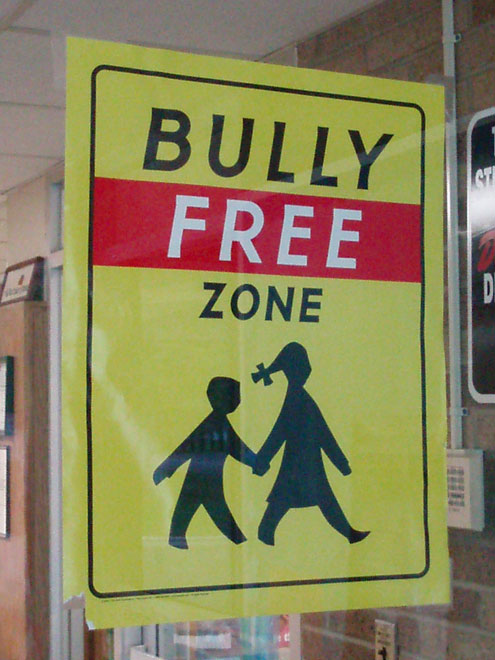 Bullying has been around for ages, but the last ten years have introduced the threat of cyber-bullying. Rather than encountering bullying face-to-face, people hide behind a computer or phone screen with confidence, saying whatever they want without penalty.
Bullying has been around for ages, but the last ten years have introduced the threat of cyber-bullying. Rather than encountering bullying face-to-face, people hide behind a computer or phone screen with confidence, saying whatever they want without penalty.
Cyber-bullying is especially common among middle school and high school aged students, a time when teenagers are most vulnerable. It’s a time when teenagers are discovering who they are, questioning things like religion and sexual orientation — life is difficult enough. When you add bullying to the picture, for some, life seems unbearable.
Beginning in March, Dean Terry, the director of the emerging media program at the University of Texas at Dallas, along with two students, released a Facebook application with distressing possibilities. Dubbed “EnemyGraph,” the new application will allow users to make a Facebook friend or page an “Enemy.” While its intentions are harmless fun, teenagers often find a way to make things harmful.
Parents hearing about the application are furious. Do they or their children really need another tool for ridicule? Although the application’s creators say there will be no toleration of bullying within the app, it is hard to believe that they will be able to monitor its users if EnemyGraph becomes increasingly popular.
One of the defenses the application’s creators use to combat bullying allegations is that one can only make an enemy of someone who is on their friends list. Most people can agree, however, that it is not rare to be Facebook friends with someone you dislike. In fact, many people friend their enemies in order to see what is going on in their life. Sure, it’s sad, but it’s definitely true.
Now, with this new app, students have the potential to band together to make enemies out of people they know. Maybe it will be due to their religion. Maybe it will be due to a mental or physical handicap. Or, maybe it will be due to a group leader singling out a random classmate. Teenagers do not always need a legitimate reason for malicious behavior, after all.
It is really disconcerting to think of how many people could be targeted because of EnemyGraph. For some students who are already struggling with school, finding out that a group of classmates have all made them an enemy on Facebook would be heartbreaking. It is bad enough to feel rejected at school without adding to the problem by declaring it on Facebook, too. This could be your little brother or sister. It could be your cousin or your neighbor. It could happen to anyone for any or no reason at all.
The only more promising part of the application, however, is that it requires you to be a user of the application in order for you to be a potential target to another user. While this does help the problem, it certainly does not solve it.
Even if teenagers cannot actually make an enemy out of a classmate, they can make an enemy of something that represents the classmate. For a vulnerable teenager struggling with self-discovery, seeing hatred spat towards them could be traumatizing. Even if you disagree with a lifestyle choice of some sort, it is wrong to attack someone because of it.
Suicides among teenagers should not be the reality, but unfortunately, it often is. Bullying and cyber-bullying are devastating to teenagers, and the last thing they need is another Facebook application with the potential to continue to do so. EnemyGraph might have been created to bring people together over their enemies, but all I can see it ultimately doing is tearing people apart.
Jordan Klosky is a sophomore majoring in journalism. Her column runs biweekly on Wednesdays.









